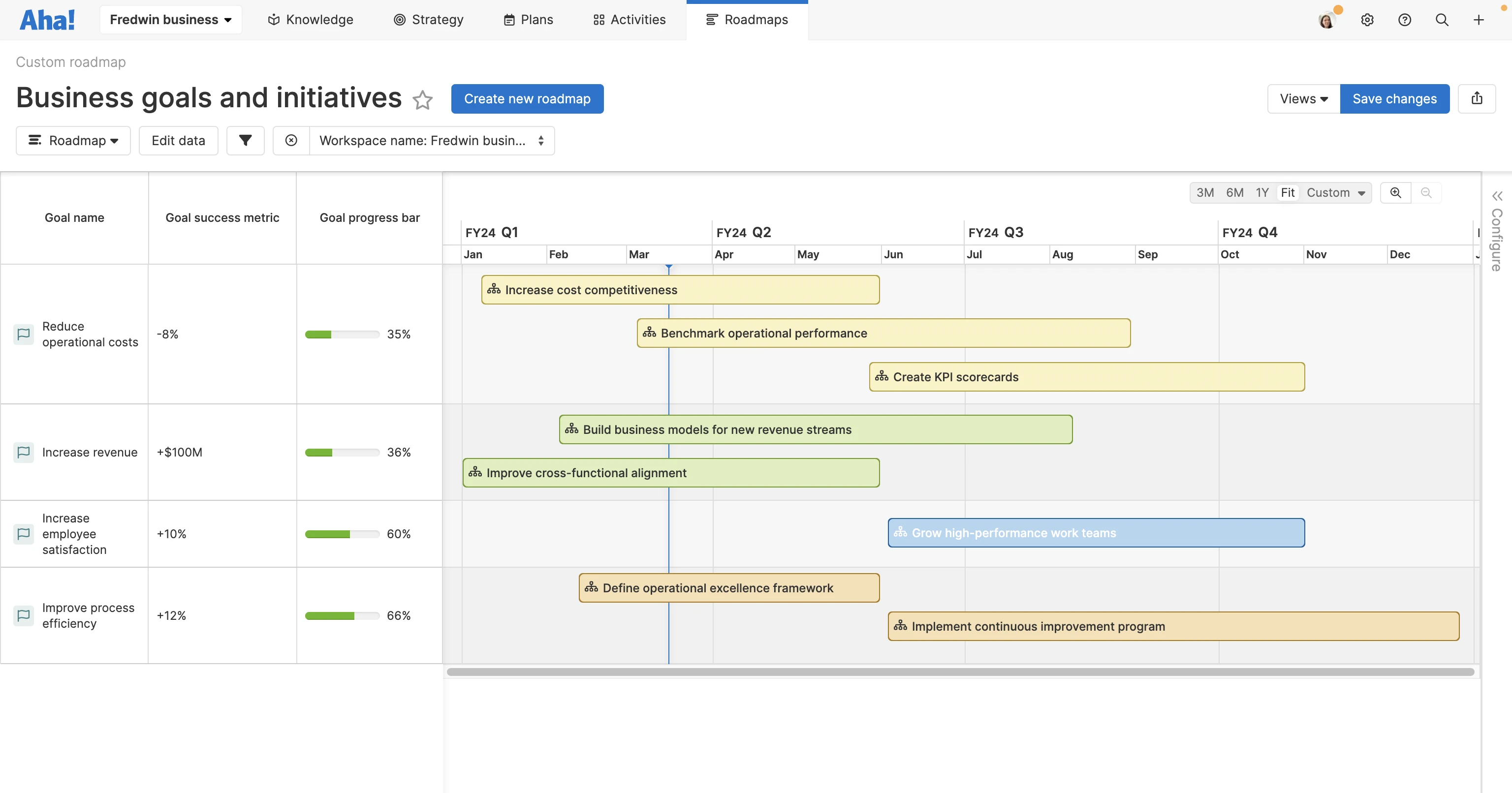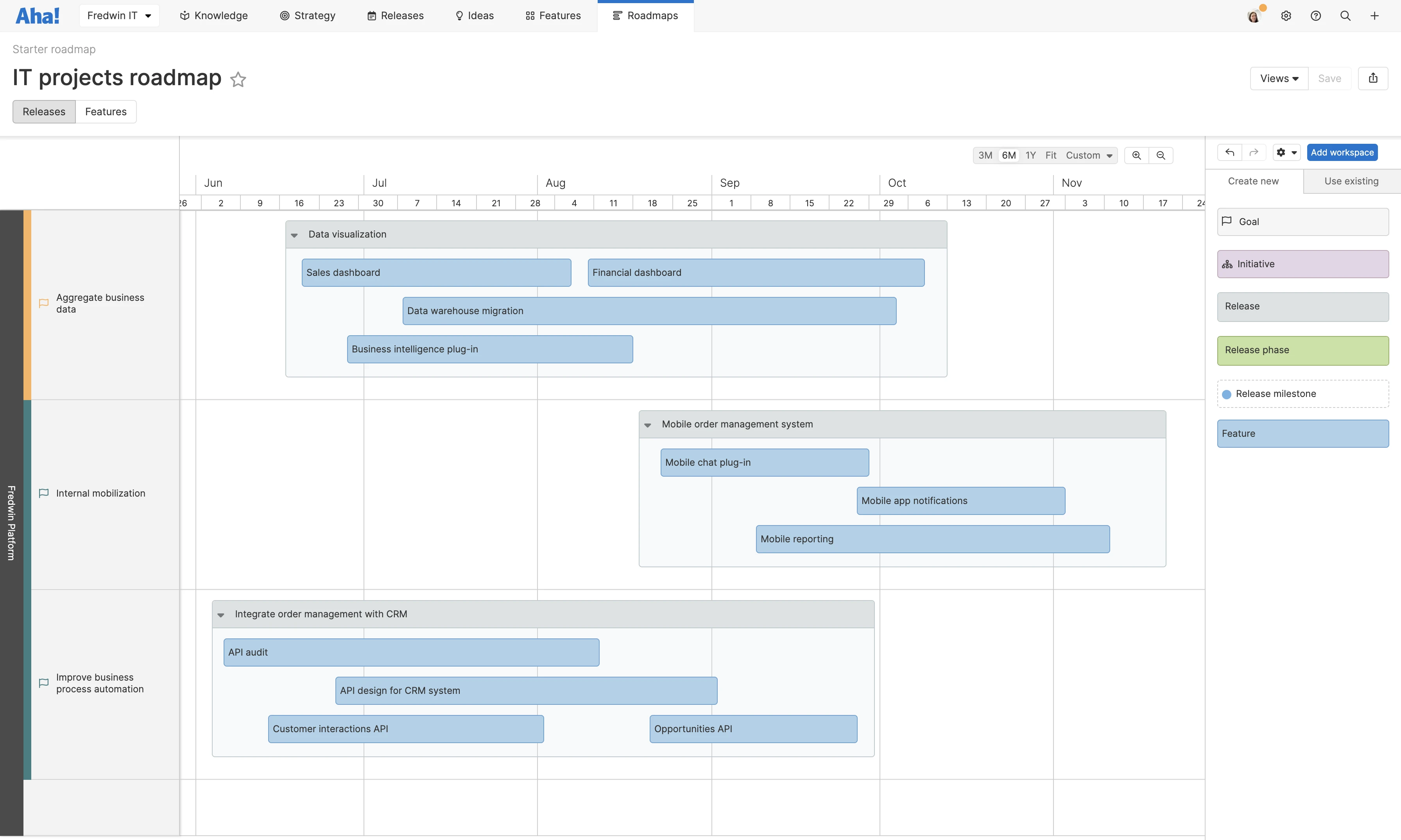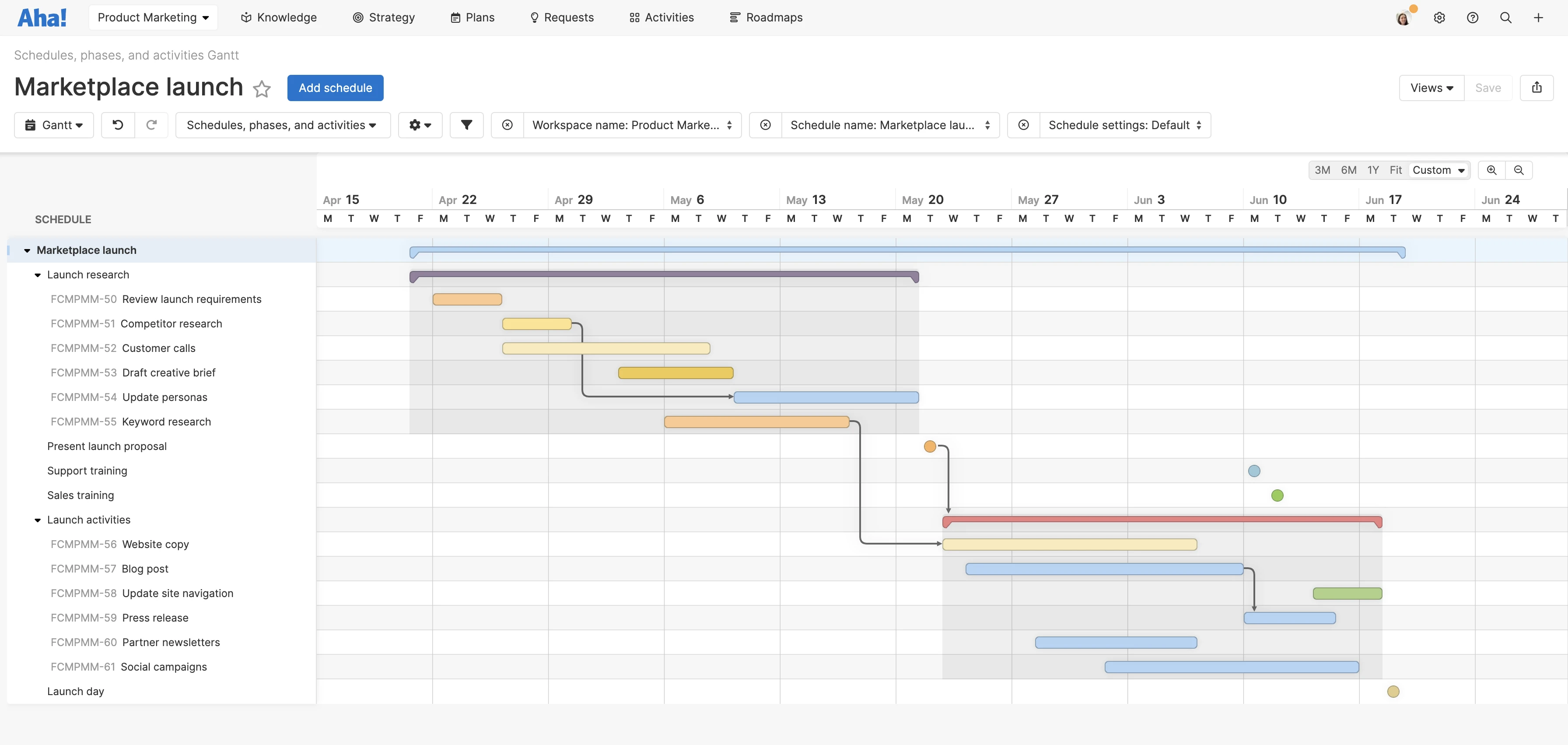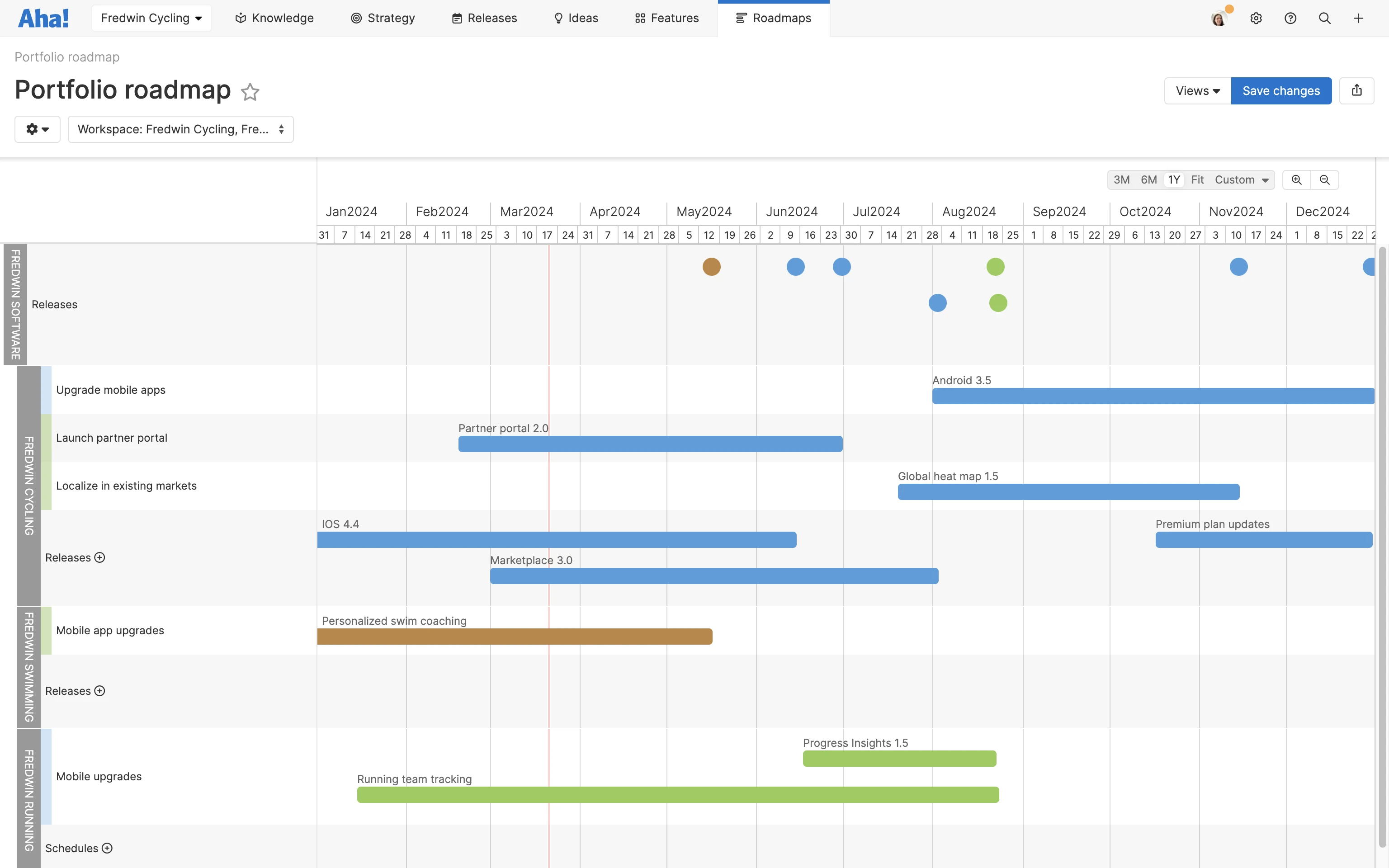Roadmapping best practices
Essential elements of a product roadmap
Last updated: February 2025
Accomplishing great things does not happen accidentally. You need a clear overview of what you want to achieve and an intentional plan for how you will reach your goals. This is why product teams build roadmaps.
Building a roadmap helps you visually define what you want to achieve, the work required, and a timeline for when that work will happen. A clear roadmap keeps teams aligned and focused on meaningful progress.
You have probably heard of a roadmap in the context of product management. A product roadmap visualizes the product strategy and the cross-functional work required to deliver a new customer experience. Product managers typically use these roadmaps to communicate product plans to company leaders, internal teams, and customers.
But creating a roadmap is useful for all types of efforts. Maybe you are starting a company, launching a new service, leading a cross-functional initiative, or managing a large program. Having a visual representation of what you are working on clarifies where you are headed and aligns the team around a shared objective. And when you can see exactly how the specific tasks you are working on support broader goals, you can focus on what matters and make a real impact.
Build your own roadmap. Try Aha! Roadmaps — free for 30 days.
Jump ahead to any section:
What are some challenges when building a roadmap?
Creating an exceptional roadmap can help you achieve meaningful results. But without a solid understanding of roadmap best practices, it is easy to build an ineffective roadmap. It might be overly simple or disconnected from strategy — displaying a collection of tasks and due dates with no corresponding objectives. Or it might be too complex. This can happen if you add every possible idea to the roadmap or include more goals than you can realistically achieve in a given time period.
Here are a few common areas where people struggle with roadmapping:
Details
Process
Let's start with strategy. If you cannot define what you are trying to achieve on a high level and why it matters, you have no target to aim for. You need a direction to move towards so you can plan effectively and measure your progress.
The details are important too. How do you determine which information is relevant to include on your roadmap, especially when you are sharing data with different audiences? It helps to tailor your roadmap view depending on who will be viewing it. For example, you might want to show a high-level view of business goals and a broad timeline to company leaders, or you can display a more detailed view of the tactical work to your collaborators.
Another common problem folks have with roadmapping involves process. Unless you are using a good purpose-built roadmapping tool, the act of building and updating a roadmap can be incredibly time-consuming. It is frustrating to manually update your roadmap and modify it for different audiences. And if you forget to revise it even once, the people you share your roadmap with will be viewing an outdated and inaccurate document — potentially leading to confusion and missed deadlines.
Ineffective roadmaps often get ignored or forgotten because they are not useful. But when done well, a roadmap inspires you to move forward. It rallies everyone around what you are working towards and encourages you to take meaningful action to realize your vision and deliver on what the roadmap promises.

This is an example of a business goals and initiatives roadmap created in Aha! Roadmaps. Each bar represents an initiative or broad theme of work you are pursuing. Initiatives link business goals and success metrics.
How should you approach roadmapping?
A roadmap is simply a visual timeline of what you are planning to accomplish and why it matters. But underneath the simplicity of the visual representation is a lot of deep thinking. Your roadmap is the result of defining goals, analyzing feedback from other people, evaluating what the biggest opportunities will be, and making strategic decisions about where to focus your efforts.
Once you clarify what you are trying to accomplish at a high level, you can create relationships on your roadmap between strategic initiatives and the actual work you are planning to do. Mapping work to initiatives allows you to make prioritization decisions to stay on track towards achieving your objectives. A roadmap is a commitment and a guide — you are showing how completing each work item will bring you closer to reaching your goals.

This is an example of a high-level starter IT projects roadmap built using Aha! Roadmaps.
Capturing the story you want your roadmap to tell is an art — you need to present the details in a way that inspires and aligns everyone involved. This means considering what information is relevant, why, and how to present it in the most accurate and compelling way.
It also means thinking about how to convey the timing of your efforts. Organizations use different planning horizons, such as months, quarters, half years, or longer. The time frames you display should correlate with your planning periods and fit with the level of detail you need to share. For example, a roadmap showing all the activities that must be done before a new product can launch next month will naturally include more detail than a roadmap that highlights a company's long-term strategic initiatives over the next three years.

This is an example of a product marketing roadmap for an upcoming go-to-market launch. It lists all the cross-functional work that supports the launch.
Another important note on timing — you do not have to include exact delivery dates on your roadmap. It is perfectly fine to choose a broader span of time such as a week, month, or even quarter. Just remember to review your roadmap often and update it when dates change or priorities shift.
The basics of building a roadmap
No matter what endeavor you are working towards, you want to show where you are headed and the broad themes you are pursuing to get there. Include a timeline view of in-progress and upcoming work and make it obvious how each individual work item supports a larger goal.
Whether you want to build a new roadmap or improve an existing one, here is an overview of how to create a compelling visualization:
1. Capture the “why”
Is there already a clear strategy in place? If not, set a vision and strategy for what you are working towards. Define the goals that will support the strategy and a core set of success metrics.
2. Gather multiple perspectives
Seek out perspectives from your partners, colleagues, collaborators, and customers before building out the detailed plans. Input from the people around you will help you hone your vision and clarify your objectives.
3. Define the themes
Define and group your objectives into a few themes or initiatives. These themes highlight your main areas of focus and serve as guardrails for planning the work ahead. They also help you share more detail on how you will achieve your vision.
4. Organize and prioritize
Break down the themes into specific work items to understand exactly what you need to do. If you have many ideas and requests to consider, use a scorecard to measure the effort required against its potential impact. This ensures that the work you are spending time on aligns with your strategy.
5. Customize to your audience
Who are you presenting the roadmap to and what do they need to know? Whether you are planning an upcoming initiative or reporting on progress, tailor the details to your audience and their needs. For example, you might opt to share strategy, progress towards goals, or specific work items.
6. Adjust when needed
Your roadmap is a living document. Make adjustments to dates and plans, update it with new ideas, and show the progress you have made against your goals. Be sure to communicate updates to anyone who is involved in the effort.
Related:
What visual elements should a roadmap include?
When you glance at a roadmap, you can probably assess quite quickly whether it pleases your eye. It may be harder to articulate why it works or does not. What makes a roadmap easy to understand and visually compelling? The truth is that excellent roadmaps use consistent visual elements to convey relevant information quickly and clearly.
Here are a few of the visual elements to consider:
Time frame | Highlight upcoming work within a relevant time frame. For instance, if you are zeroing in on work over the next three months, it may not make sense to include a year-long time frame. Timelines are usually presented as a horizontal bar at the top of each roadmap for easier comprehension. |
Hierarchy | Organize the details of your work logically and break complex initiatives into smaller tasks. You can display information according to start or end dates, status, or priority, to name a few options. |
Progress | Show the status of different work items and progress towards goals. You can quickly indicate status with shaded bars, colors (green/red), or checkmarks. |
Colors | Communicate visually by assigning different colors to different work components. Each goal (and its corresponding initiatives) can have its own color or you might assign colors by team or owner. |
Symbols | Convey additional details with shapes, arrows, and other custom notations. For instance, you can indicate important dates or milestones with circles or draw arrows to show linked work and dependencies. Customize your roadmap however you like — but make sure to stay consistent so your audience can decipher and follow the meaning of the various symbols. |

This is an example of a portfolio roadmap. Each functional group is working on its own initiatives that roll up to a shared set of goals.
Roadmapping confidence comes with knowledge and experience. The more roadmaps you create, the more self-assured you will be about the exercise of roadmapping. You will feel more pride in each visualization you build and share with others.
If you want to make better roadmaps, consider trying a purpose-built tool like Aha! Roadmaps. Choose from hundreds of roadmapping views or quickly create your own stunning roadmap. Link your work to strategy, customize the information you want to convey, and share your plans with the team. Roadmaps in Aha! update in real time when you adjust dates, assignees, and other details. Try Aha! Roadmaps now — free for 30 days.
FAQs about roadmap best practices
What makes a good roadmap?
A good roadmap communicates the right information to the right audience in a visually appealing way. It gives a clear direction for where you are headed and shows how individual work items bring you closer to achieving your goals. A good roadmap is inspiring — it unites everyone around a shared plan for reaching your vision.
What is a product roadmap?
A product roadmap is a visualization of what the product team will deliver and when. It shows the big efforts that will help you reach your product objectives along with a corresponding timeline. Build a product roadmap to highlight product goals, align the organization around product plans, and share new features and enhancements with customers.
What are the different types of product roadmaps?
Once you create a product roadmap, you will want to tailor the roadmap view to your audience and their needs. Here are the common types of product roadmaps:
Strategy roadmap: Highlights the product vision and strategy to company leaders and aligns the team around upcoming work and priorities.
Portfolio roadmap: Shows the planned releases for a suite of products in a single view.
Epics roadmap: Shows how a group of related features across sprints or releases come together to deliver a new customer experience.
Releases roadmap: Coordinates cross-functional launch or release activities so everyone in the organization can see what must be done and when.
Features roadmap: Communicates the timing and details for the new features that you will deliver to customers or internal teams.
How do you communicate your roadmap to others?
Presenting your roadmap informs and inspires the people around you. But it is up to you to share your roadmap freely and give frequent updates on your plans. Otherwise, no one will know what you are working towards or understand why it matters. While a roadmap is great for visualizing and reporting on your progress, you always need to consider your audience — who they are, what they need to know, and why.
How do you manage a roadmap for a startup?
Business success relies on strong strategic planning. Whether you are managing a roadmap for a startup or a more mature organization, you need to consider your overall business goals and when you want to achieve them. Establishing clear objectives for business growth is vital to giving the team a path forward — think about adding goals such as revenue or hiring targets and market expansion to your roadmap. You will also want to make sure your roadmap is flexible and dynamic, especially since plans change and new opportunities come up quickly at startups.